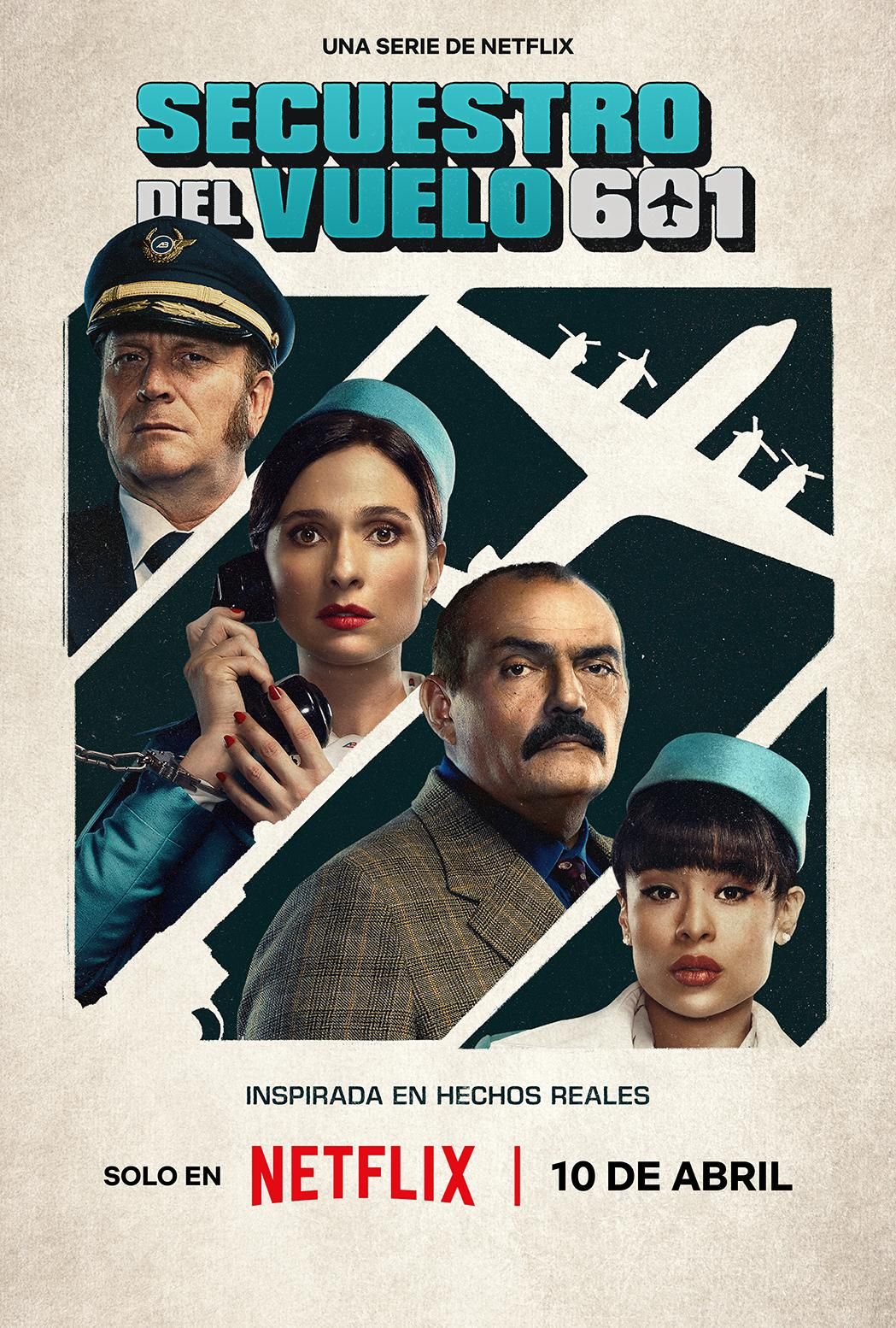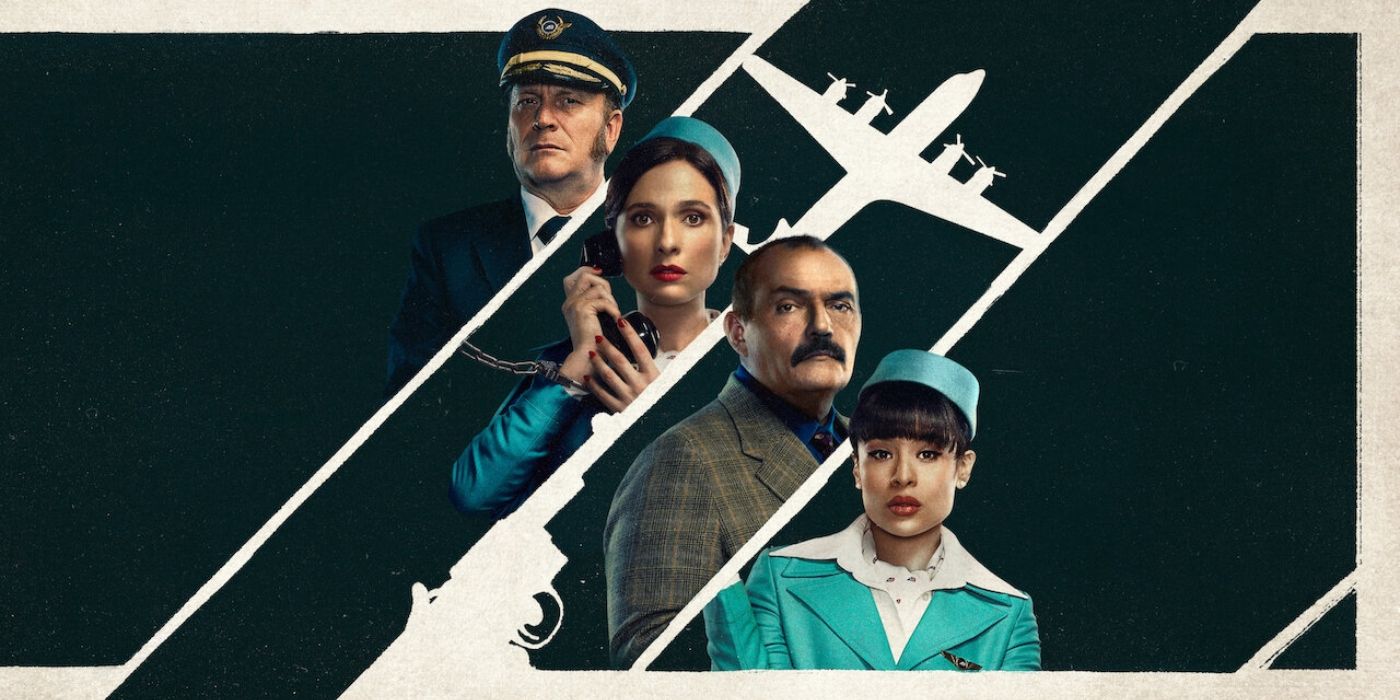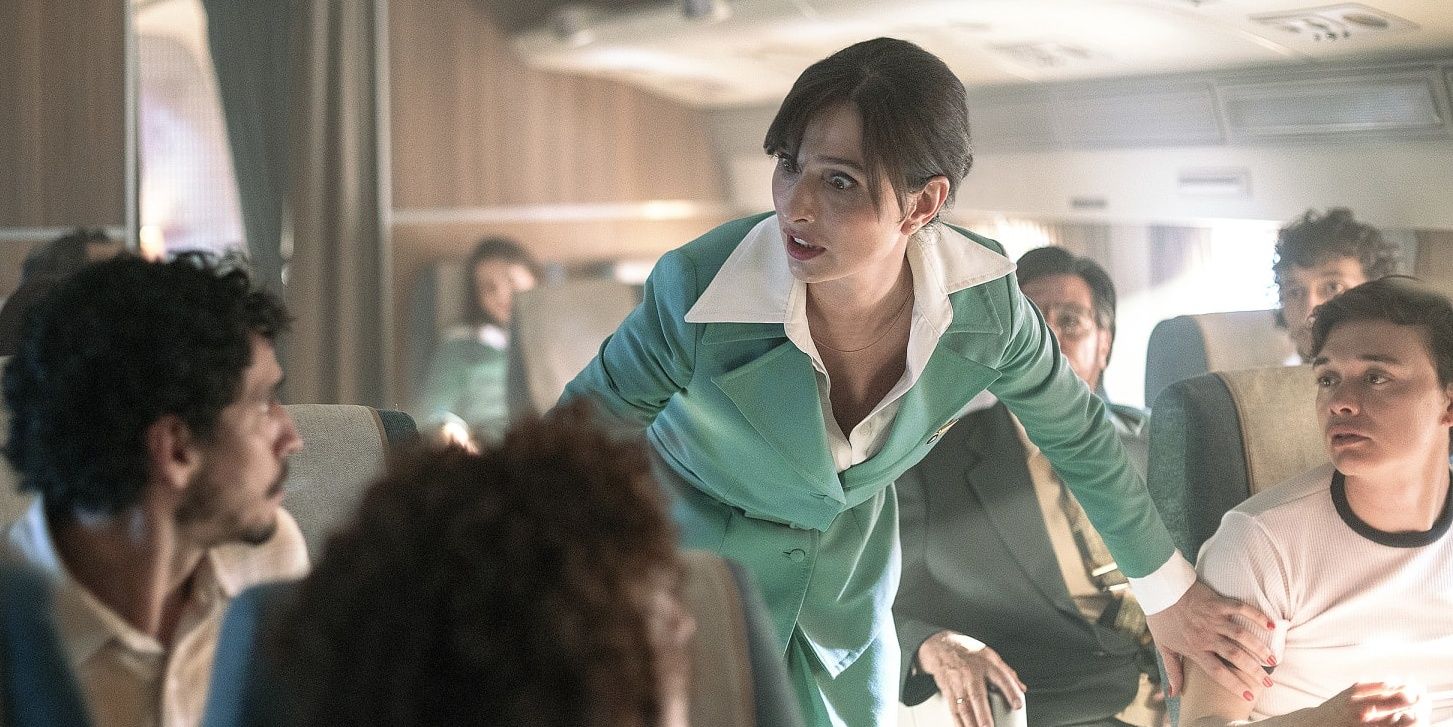The Big Picture
- Sociedad Aeronáutica de Medellín's Flight 601 was hijacked shortly after take-off from Pereira, not Bogotá, by two men aiming for Cuba.
- The hijackers of Flight 601 were not guerrilla fighters but Paraguayans hoping to make it as soccer players.
- The 60-hour ordeal ended with hijackers abandoning the plane in Buenos Aires after landing in several countries.
The golden age of aircraft hijacking. That's how Netflix's newest series, The Hijacking of Flight 601, describes the period between the years of 1968 and 1973. In a text that appears right before the show's title card, as a Spanish version of The Animals' "The House of the Rising Sun" plays in the back, it is explained that about 348 airplanes were hijacked around the world during this time, with more than half of the cases taking place in Latin America. Among these hundreds of hijackings, seventeen took place in Colombia. It is against this backdrop that the plot of The Hijacking of Flight 601 is set. Created by C.S. Prince and Pablo González, the six-episode-long miniseries purports to tell the story of the longest of these hijackings, that of its titular flight, which began on May 30, 1973, in the Colombian city of Pereira, and ended more than two days later, in Buenos Aires, Argentina.
It is a story with strong ties to the real world: Prince and González did not come up with their plot out of the blue, but based it on the real hijacking of the Sociedad Aeronáutica de Medellín's, or SAM, Flight 601, an event that held the Colombian public's attention in the early 70s. With their due artistic liberties, the two showrunners focus their story on a pair of flight attendants, Edilma (Mónica Lopera) and Bárbara (Angela Cano) who are sent onto the hijacked plane to help tend to the passengers turned hostages. The series also focuses on the pilot and co-pilot duo, Richard Wilches (Christian Tappan) and Guillermo Luís Lequerica (Johan Rivera), and on the manager of its fictional Aerobolívar air company, Pirateque (Enrique Carriazo), as well as, of course, on the two men responsible for the crime, Borja (Valentin Villafañe) and Solano (Alian Deveta). With a peculiar sense of humor paired with a thrilling urgency, The Hijacking of Flight 601 is a captivating series. But what is the real story behind the show? What truly happened in the hours that followed the take-off of SAM's flight 601?

The Hijacking of Flight 601 (2024)
During a transatlantic flight, passengers and crew face a dire situation when armed hijackers seize control of the airplane. As negotiations play out on the ground, those aboard must come together to formulate a plan, testing their courage and resilience in an intense battle for survival.
- Release Date
- April 10, 2024
- Cast
- Mónica Lopera , Christian Tappan , Ángela Cano , Enrique Carriazo , Marcela Benjumea , Johan Rivera , Carlos Vesga , Ilena Antonini , Valentin Villafañe , Alián Devetac , Juan Pablo Raba
- Main Genre
- Drama
- Seasons
- 1
- Writers
- Camilo Prince , Pablo González , Miguel Fajardo , Verónica Triana
- Streaming Service(s)
- Netflix
- Directors
- Camilo Prince and Pablo González
- Showrunner
- Camilo Prince and Pablo González
Flight 601 Was Hijacked Shortly After Take-Off
For starters, there are some things that should be cleared up. According to the BBC and author Massimo Di Ricco, there were not hundreds of plane hijackings in Latin America in the late '60s to early '70s, but about 90. Furthermore, the number of people aboard Flight 601 was not 43, but 84, counting passengers and crew members. Finally, unlike what is shown in the series, Flight 601 was not departing from Bogotá, but from the aforementioned city of Pereira. The plane, a Lockheed Electra HK-1274, entered a whole new kind of flight zone when two men got up from their seats with guns in hand, faces covered, and announced the hijacking. The plan, the pilot and co-pilot believed, was to take the plane to Cuba. Oh, and also to get about $200,000 and secure the freedom of a group of political prisoners.
Responsible for the book Los Condenados del Aire (The Condemned of the Air), which chronicles the story of Flight 601, Di Ricco stated that the hijackers saw Cuba as a kind of utopia in which they could live according to their communist ideals. And, in fact, in 1973, the island represented a safe haven for many in Latin America. Following the Cuban Revolution of 1959, numerous U.S.-backed military dictatorships popped up around the continent. In 1973, for instance, Chile would fall prey to one of the bloodiest regimes of this kind. Now, in tandem with these dictatorships, guerrilla groups also began to emerge all around South and Central America — guerrilla groups that were usually the ones behind the hijacking of flights such as SAM's 601.
Colombia was not under a military dictatorship at the time of the hijacking, but it did have its fair share of insurgent organizations. One of them was the Ejército de Liberación Nacional (National Liberation Army), or ELN. It was to this group that the two hijackers told the captain that they belonged. According to Di Ricco, the ELN had been making the rounds in the Colombian media at the time due to the arrest of numerous artists and university professors suspected of participating in the guerrilla. "They probably said: 'Let's use the famous political prisoners to divert their attention'," Di Ricco stated. "But they didn't really care about any of that."
The Hijackers of Flight 601 Weren't Really Guerrilla Fighters
Di Ricco says that because, when the identity of the hijackers was revealed, the people learned that they were actually not involved with the ELN or any other political organizations. It turns out that they were actually two Paraguayan men who had moved to Colombia in the hopes of making a name for themselves as soccer players. However, Francisco Solano López and Eusebio Borja soon found themselves in dire straits, and hijacking a plane seemed like the best way out of their predicament. Solano was arrested by the Paraguayan police merely five days after the end of the hijacking. Borja, in turn, was never found.
During the 60 hours and over 13 thousand miles that Flight 601 spent in the air, Colombian authorities refused to negotiate with the hijackers. The whole hard work was left to the air company's officials, who offered $20,000 in ransom to the hijackers. Eventually, the two parties settled on $50,000, which was delivered by new crew members who boarded the plane in Aruba as the pilot and the co-pilot were too tired to resume the flight.
Aruba was actually the desired final destination of Borja and Solano, not Cuba, as Captain Jaime Lucena had guessed. And, for about ten hours, Flight 601 did remain stranded at the Oranjestad Airport, on the Caribbean island. During this period of time, the hijackers saw fit to release all women and children that were among the passengers, as the circumstances were beginning to weigh on them. According to Di Ricco, a group of bikers was also released.
Then, the hijackers tried to divert the plane to Lima, the capital of Peru, but the aircraft had to return to Aruba due to technical difficulties. That's when another group of passengers got out: some of the passengers merely opened the emergency door and jumped from the plane to the runway. Flight 601 would also land a third time in Aruba due to a lack of fuel.
The Hijacking of Flight 601 Ended 60 Hours Later, in Buenos Aires
This was when the new crew boarded the plane with the cash. Following this event, the plane left for Lima, where another group of passengers was released. Only the crew and the hijackers remained on board when the plane landed in Mendoza, Argentina, and then in Resistencia, near the border with Paraguay. Finally, the plane made a quick stop in Asunción, the Paraguayan capital, and then made its way to Ezeiza Airport, in Buenos Aires.
When Flight 601 finally got to Ezeiza, though, there were no hijackers on board anymore. They had dropped off in Asunción and Resistencia, each with half the money that had been delivered by the new crew. According to Di Ricco, they originally wanted two of the flight attendants to come down with them as collateral, but eventually agreed to leave on their own. This led many at the time to suspect the plane's own crew, but doubts were soon quieted when Solano was arrested. As for Borja, well, Di Ricco wonders why he hasn't become a sort of myth, someone kind of like D.B. Cooper. Who knows? Now that a TV show has been made about him, maybe this is his chance.
The Hijacking of Flight 601 is available to stream on Netflix in the U.S.


